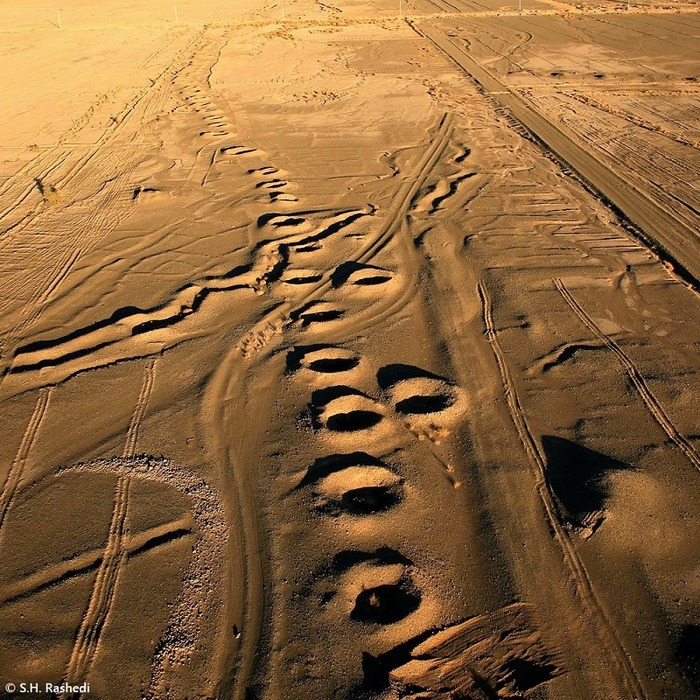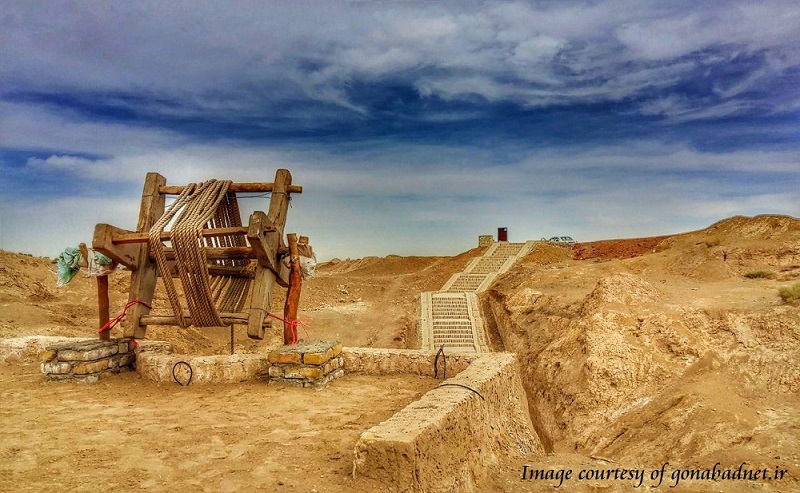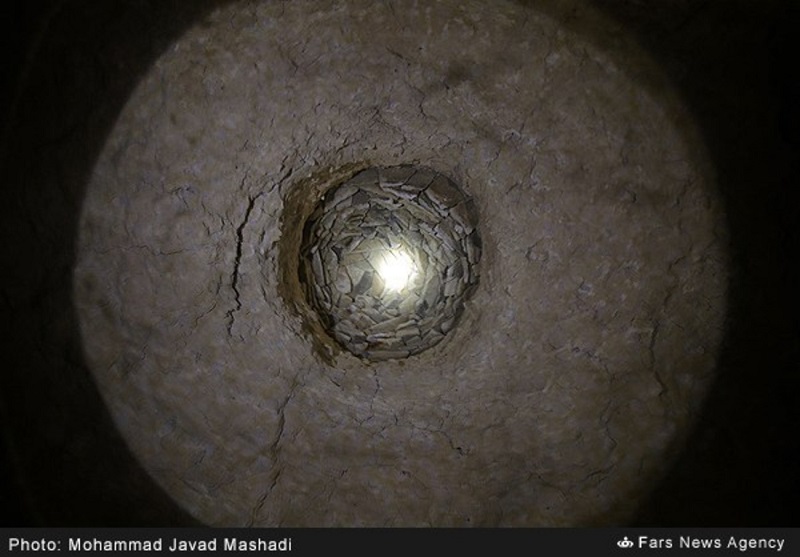
Qanat
Making qanat was an ancient technique used by Iranians to solve water problems and it has been inscribed on the UNESCO list as a tangible Iranian cultural heritage. This technique involved transporting water to the surface through a canal or waterway from the depth of the earth. In the qanat system, the water flowed from a large well into a canal with a gentle slope and finally ended at an outlet on the ground called “mazhar” with the help of gravity. Considering the techniques and equipment available to qanat builders, the implementation of such a project should be described as one of the most creative contributions of Iranians to the science of water supply.
History
The earliest qanats were created at least five thousand years ago in the eastern and southeastern regions of Iran. The 5000-year-old qanat of Zavareh, the 2500-year-old qanat of Gonabad (the deepest in Iran with a depth of nearly 350 meters), the 3200-year-old and 40-kilometer long channel of the water treatment facility of Chogha Zanbil, and the one thousand-year-old water distribution network of Milan Village in East Azarbaijan Province are among the oldest and most amazing qanats of Iran.
How Was a Qanat Made?
The initial step in qanat construction was the identification of an appropriate water source by digging a well and knowing the depth of the water level. After ensuring a stable flow of spring water into the well, the stage of leveling and creating a slope would begin. The next step was the digging of the water transfer canal, which usually started from “mazhar”, that is, the place where the water was supposed to exit, but in some cases, the water transfer canal was simultaneously dug from two points, i.e., the well and mazhar.
Several wells were also dug at intervals of 20 to 35 meters and eventually, by digging a tunnel, all the wells would be connected. The opening of each well was secured with a cover of stones and mud to reduce the possibility of its collapse.
How Would the Water Get from the Main Well to Mazhar?
One of the difficulties of creating a qanat was adjusting the slope of the water transfer tunnel to bring water from the main well to mazhar. The slope of the waterway had to be very precise because if the slope was more than necessary, the speed of the water would increase and it would result in the erosion of the tunnel walls and make it collapse. It is to be noted that digging a qanat was done without the use of mechanical equipment available today and just with the simplest tools like shovels and pickaxes.
How Much Water Did the Qanats Transfer?
The quantity of water provided by qanats changed according to the change of seasons, the characteristics of the underground water tables, and the texture of the soil. Usually, the qanats that were created on a permanent water table had a constant flow throughout the year, but the qanats that were located on spongy soils and did not benefit from a permanent water flow, would dry up in the summer. Some large qanats transferred up to 1,750 liters of water per minute, but the quantity of water provided by most qanats was about 15 liters per minute.
How Was the Qanats Maintained?
The water route of qanats had to be continuously dredged and repaired to avoid destruction during sudden floods. Usually, once a qanat would become functional the mouth of the main well would be covered with stone slabs or something similar so that sand would not flow into the canal.
Who Dug the Qanats?
Those who specialized in digging or maintaining qanats were called “moqannni” (lit. well-digger). Dredging the canal for transferring or revitalizing the wells was a precise and specialized work that could only be done by skilled “moqannnis” who used interesting tricks in their work. For example, they always carried a lamp that was fueled by castor oil. This lamp was used for lighting, as a tool for orientation, and also as an instrument for checking air ventilation; in the sense that if the lamp would go off it meant that the flow of water would not be good enough and another well was to be dug.
What Were the Uses of Qanat Water?
Qanat water was used for agriculture, washing, and drinking. Since the land where the qanat was usually constructed belonged to different people, sometimes its water was transacted. Because of the respect for water in Iranian society, some landowners would donate the qanat or its water for the benefit of the people.
In the absence of qanats, many human settlements would not have been formed and big cities such as Hamadan, Qazvin, Neyshabur, Kerman, and Yazd would not have been created. In some rural parts of Iran, qanats continue to be the main source of domestic and agricultural water supply.
Making qanat was an ancient technique used by Iranians to solve water problems and it has been inscribed on the UNESCO list as a tangible Iranian cultural heritage.
| Name | Qanat |
| Country | Iran |






Choose blindless
Red blindless Green blindless Blue blindless Red hard to see Green hard to see Blue hard to see Monochrome Special MonochromeFont size change:
Change word spacing:
Change line height:
Change mouse type:
.jpg)


.jpg)










